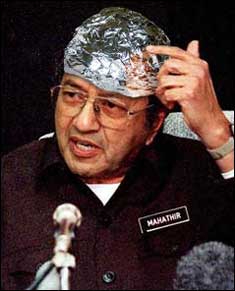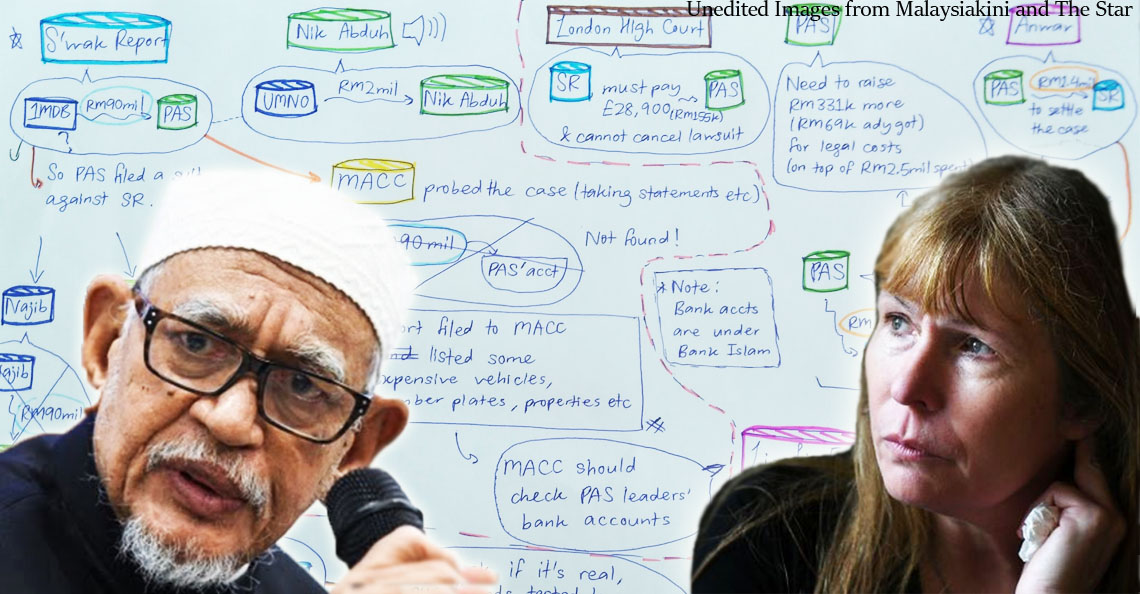Tun M wants to create a new international currency with GOLD. Here’s why that might work.

- 667Shares
- Facebook598
- Twitter7
- LinkedIn7
- Email7
- WhatsApp48
Huawei isn’t the only victim of President Trump’s economic war against the world.
Malaysia recently found itself on a US list of countries ‘possible practising unfair currency practices’ – essentially saying that America is monitoring us for possible currency manipulation. Maybe they don’t like us, maybe cos we pegged our currency to the USD in ’97, maybe it’s an ‘agenda’, or maybe Trump was just grumpy that day.

Now coincidentally, just a day after that, Prime Minister Mahathir would retaliate. While he was in Japan for a conference, he called out the US for their foreign policy, saying that if anyone was to decide whether to upgrade or downgrade a country, it should be done by an international group, not just one country (the US in this case). He adds that the US have a habit of accusing countries as no good and forcing their will on smaller nations. But the quip that stole newspaper headlines was this:
“In the Far East, if you want to come together, we should start with a common trading currency…. for the purpose of settling of trade. And that currency belonging to East Asia, then there would be fairness. At the moment we have to depend on the US dollar. But the US dollar is not stable. So the currency that we propose should be based on gold, because gold is much more stable,” – Dr Mahathir, at the Nikkei Future of Asia conference
Yes, that’s right: Mahathir has called for the return of the gold standard. But uh… what is it?
It’s when you can’t just print money. You gotta justify it with… real gold

Now the term ‘gold standard’ or ‘gold backed’ might be familiar to those of you who paid attention in Economics class, but for those who don’t know it, dun worry we’ll give you a quick explainer.
The gold standard, in like the simplest terms, is a system where countries fixed the value of its money to specified amounts of gold, or tied their currency to one that did so. This meant that countries could not simply print out money; countries had to limit the amount of cash in circulation to a multiple of the gold reserves the central bank had. You could also trade back the paper money for an amount of gold. For 400 years, this was the way money was measured.
AND THEN, the Great Depression happened, the world’s economies were in the longkang, and so countries needed to print more money to stimulate the economy, which basically made the Gold Standard quite unstandard for many years. After WWII, countries needed some form of monetary stability once again, and met in the US for the Bretton Woods Conference.
OK so this part is like world-changing. Because the US was the strongest economy at the time, most of the major countries decided to fix their currencies to the US dollar, and the US dollar would be linked to gold, essentially making the US$ the most important currency in the world. But it’s tied to gold so should be okay right? Then President Nixon removed the US tie to their supplies of gold in 1971. So now, the US currency can print money whenever it wants, and everyone in the world is dependent on its value.

Ok yes, so Mahathir is ‘kinda’ right la. Because of this history, the US does kinda have the ability to exert some control over world markets. As for the gold standard tho, just like any major idea in economics, there’ll be both supporters of the idea as well as opponents. Being the neutral darlings that we are here at Cilisos, we’re going to list the pros and cons of the gold standard for you to see yourself.
Pros:
- Long term price stability: Since govts can only print money based on how much gold they have, there’s little inflation as the amount of money in circulation only increases if there’s more gold (or in the case of the Bretton Woods system, countries would print more money if their currency’s value was higher than the approved rate against the USD)
- Gold is a stable valuable asset: Gold has been called the ‘universal currency’, and just about everyone agrees about that it’s valuable. It’s value seldom fluctuates and is dependable.
- Discourages govt debt: As mentioned earlier, because the govt can’t print money willy nilly, they can’t simply pump money into the national budget, preventing the risk of the country’s coffers running into debt.
Cons:
- Short term instability: While gold guarantees long run stability, in the short run, prices are incredibly volatile, leading to financial instability.
- Govts can’t stimulate economy in recession: The flip side of the ‘cant print money willy nilly’ coin, govts around the world had to ditch the gold standard during the Great Depression so that they can print more money and pump it into the economy to prevent further recession. If a govt’s ability to pump money during a recession was limited due to a gold standard, this could prevent a boom.
- The cost of producing gold: govts would need to fund gold mining and production to maintain a full gold standard, when this money could be used for other more crucial expenditures.
Now regardless of your opinion on the gold standard, let’s make the assumption that Mahathir’s East Asian currency backed by gold becomes a reality. How would that even work?!
It’s not like the Euro, but rather just for trade (and Dr M proposed this 17 years ago)
Now we know what you’re thinking but no, this isn’t like the EU’s euro. In fact, Mahathir addressed this at the conference, saying that the euro was very disruptive as each country was at a different level of development when suddenly everyone found themselves switching to the euro. As such, Dr M called for a common trading currency for settling of trade only.
And as for Dr M’s plan for this supposed East Asian trading currency, according to what he said at the conference, this currency will be:
- Will not be based on existing currencies
- A common trading currency, belonging to East Asia
- Based on gold, because gold is much more stable
- New currency should relate to local currency thru an exchange rate, which in turn depends on performance of country
- Will not be for domestic economy, only for settling trade among countries
You can see his full comments about it below:
So essentially, if Mahathir’s plan comes to fruition, this currency will be based on gold (duh), presumably due to the benefits highlighted earlier. It will also be a new currency altogether rather than an existing one like the Japanese yen, because according to Dr M, when a country pushes its own national currency for international trade, there will be conflict.
This new currency will also only be meant for trade such as imports and exports, and countries can pay or loan each other in this new currency. And seeing that it’s meant for countries to do business with each other and not for use among us common peasants, you probably won’t be buying nasi lemak from the mak cik in this new currency anytime soon laa. Mahathir however doesn’t explain any much more, so questions such as who hoards the gold and who prints the money remain a mystery.
That being said, this wouldn’t be the first time Mahathir has tried to convince a others to take up a new currency based on gold. Indeed, Mahathir once made proposed this idea in 2002, except this time, it would be a ‘gold dinar standard‘, a payment system for the Islamic world.

Gold dinars were a historical form of payment in the early Islamic world, with Islamic law defining an Islamic dinar as a gold coin as heavy as 72 grains of barley – or between 4.44g to 4.5g of gold for modern folk. Mahathir’s idea tho came following the 1997 Asian financial crisis. Arguing that the modern Islamic gold dinar would be more resistant to the market’s ups and downs compared to the US dollar (deja vu?), he even took his idea all the way to the Organisation of the Islamic Conference.
While there was some brief hope for Mahathir’s gold dinar, with Iran even coming super close to trading with Malaysia in that currency, it would eventually be scrapped by Abdullah Badawi when it was his turn as Prime Minister. Kelantan meanwhile would also tease with the idea, even coming up with the Kelantanese dinar in the late 2000s. And while the state govt even minted out these coins and claimed they had the status of legal tender, the federal govt shot down the idea, stating that according to the Federal Constitution, the only legal tender in Kelantan is the ringgit, and that state govts were not allowed to issue their own currency.

But back to the topic of Mahathir’s grand plan for an Asian gold-backed currency. Will it actually happen?
Mahathir’s idea is difficult, but not entirely impossible
Now beyond the fact that the gold standard is commonly viewed as an artifact of the past, there are other factors that can affect the success of a new currency. For example, the gold dinar never really took off as the idea simply struggled to convince other countries of its potential. There was also a need to prove that it was credible as well as logistical obstacles such as establishing legal frameworks for how it would work around the world. The East Asian currency, should it go beyond the ‘idea’ stage, would probably go thru the same troubles.
It’s hard enough to form a multinational currency as it is, let alone a world currency based on gold. In fact, most countries already use major currencies such as the euro, pound, USD or Chinese renminbi, so adding a world currency would seem unnecessary with little additional benefit. There’s also the issue of logistics and bureaucracy, with it possibly taking generations just for the countries involved to reach an agreement. The euro for example had it’s origins in the 1920s, but it wasn’t until the 60s that serious negotiations began, and even then only fully launched in 2002.

Nevertheless, Mahathir did seem to have suggested a multinational currency with good intentions. All he wants to do is prevent currency manipulation right? In any case, his idea is only just that for now – an idea. Having said that, the old man is known for being quite persistent.
- 667Shares
- Facebook598
- Twitter7
- LinkedIn7
- Email7
- WhatsApp48



